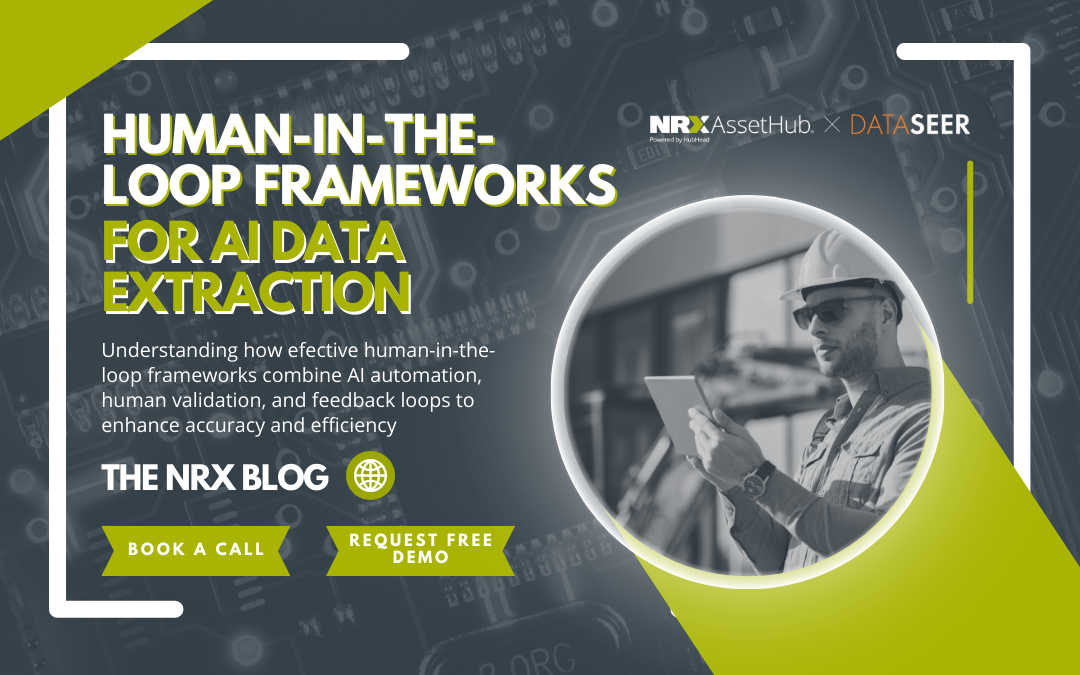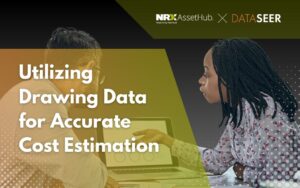Building Effective Human-in-the-Loop Frameworks for AI-Driven Data Extraction
In the previous blog, we highlighted how combining human expertise with AI minimizes errors in industrial data extraction. Now, let’s break down practical ways to establish a successful human-in-the-loop (HITL) framework. This strategy ensures AI enhances workflows without sacrificing accuracy or reliability.

Start with a Clear Workflow
A structured plan is key when introducing AI to industrial processes. HITL frameworks typically follow three steps:
- AI-First Automation: The AI kicks things off by analyzing diagrams, identifying symbols, extracting text, and digitizing data.
- Human Review: Experts step in to review and refine the AI’s outputs, especially for ambiguous or critical elements.
- Feedback Loop: Corrections are fed back into the AI to refine its future performance.
Clearly outlining these roles ensures efficiency while keeping humans focused on tasks that require expertise.

Training AI with Context
For AI to be effective, it must understand the nuances of industrial data. Here’s how you can set it up for success:
- Introduce it to a variety of diagrams, including P&IDs, isometric drawings, and electrical schematics, across multiple standards.
- Train it on anomalies and edge cases to prepare for unexpected challenges.
- Regularly provide feedback from human reviewers to improve accuracy over time.
This robust training approach helps the AI recognize complex patterns and deliver consistent results.

Equip Teams with Intuitive Tools
A HITL framework thrives when human operators have the right tools. Features like these empower collaboration between humans and AI:
- Visual Interfaces: Enable operators to review and edit AI outputs directly on the diagrams.
- Customizable Options: Allow users to add unique symbols or project-specific rules.
- Seamless Integration: Ensure compatibility with enterprise systems like CMMS or EAM platforms.
These tools not only streamline processes but also boost user confidence in AI-driven solutions.

Track Performance and Iterate
HITL frameworks need regular evaluation. Focus on metrics like:
- AI’s accuracy before and after human intervention.
- Error reduction rates over time.
- Time savings compared to fully manual workflows.
Continuous monitoring helps identify bottlenecks and ensures that the framework delivers measurable value.

Start Small, Scale Smartly
Introducing AI-driven frameworks works best when done in phases:
- Begin with smaller projects that allow for quick wins.
- Gather feedback from early adopters and refine workflows based on their experiences.
- Gradually expand to more complex applications as the framework matures.
This incremental approach minimizes disruptions and builds momentum across teams.

From Hidden Value to Strategic Advantage
Unlocking the hidden value in table data isn’t just about extracting information—it’s about transforming how organizations operate. Automation allows teams to shift their focus from manual data wrangling to higher-value activities, like analysis and strategic planning.
By embracing automation, companies can harness their data to improve reliability, efficiency, and decision-making. Technical tables are no longer just static documents—they’re dynamic tools for driving operational success, and a cornerstone of smarter, data-driven asset management.

How Can We Help You?
HubHead and DataSeer’s AI Service combines human-level understanding with machine speed to build a scalable knowledge data store of engineering designs. By integrating these solutions with your existing EAM/CMMS systems and creating a digital twin, you can enhance decision-making and streamline your maintenance processes. Contact us for a free demo or book a call.
Utilizing Drawing Data for Accurate Cost Estimation
The Challenges of Table Data Extraction
The Tedious Nature of Creating Piping Lists Manually
Share this article




